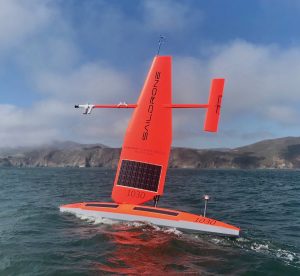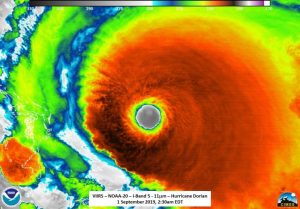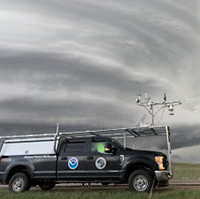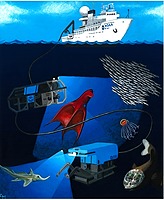Climates! It's All in the Data
This program is a collaboration between the Cape Cod Regional STEM Network and Woods Hole Sea Grant.
Summary
In this 3rd grade unit, the students explore the different climate regions of the world. Not only will the students learn the differences between climate and weather, but they will also learn how weather and climate data can be analyzed to help predict future conditions. Lastly, the students will determine the causes and effects of natural disasters and how they can prepare for those events.
NOAA Live! Webinars Highlighted: Saildrones: Sailing the Seas for Science, Talking Tornadoes with a Storm Researcher!, Hunting Hurricanes with a NOAA Pilot, and Getting Prepared for Hurricane Season
Lesson Plan
Climates! It's All in the Data Lesson Plan
Activity Sheets/Handouts
Hurricane Preparedness Worksheet
Natural Disasters Characteristics Resource Sheet
This lesson meets the following Standards:
- NGSS:
-
- 3-ESS2-1 - Represent data in tables and graphical displays to describe typical weather conditions expected during a particular season.
- 3-ESS2-2 - Obtain and combine information to describe climates in different regions of the world.
- MA STE:
-
- 3-ESS2-2 - Obtain and summarize information about the climate of different regions of the world to illustrate that typical weather conditions over a year vary by region.
Clarification Statements:
Examples of information can include climate data (average temperature, average precipitation, average wind speed) or comparative descriptions of seasonal weather for different regions.
- 3-ESS2-2 - Obtain and summarize information about the climate of different regions of the world to illustrate that typical weather conditions over a year vary by region.
- Ocean Literacy Principles:
-
- Principle 3 - The ocean is a major influence on weather and climate.
- a- The ocean interaction of oceanic and atmospheric processes controls weather and climate by dominating the Earth’s energy, water, and carbon systems.
- b - The ocean moderates global weather and climate by absorbing most of the solar radiation reaching Earth. Heat exchange between the ocean and atmosphere drives the water cycle and oceanic and atmospheric circulation.
- c - Heat exchange between the ocean and atmosphere can result in dramatic global and regional water phenomena, impacting patterns of rain and drought. Significant examples include the El Niño Southern Oscillation and La Niña, which causes important changes in global weather patterns because they alter the sea surface temperature patterns in the Pacific.
- d - Condensation of water that evaporated from warm seas provides the energy for hurricanes and cyclones. Most rain that falls on land originally evaporated from the tropical ocean.
- Principle 3 - The ocean is a major influence on weather and climate.
List of Unit Resources
This program is a collaboration between the Cape Cod Regional STEM Network and Woods Hole Sea Grant.
Teacher in Residence
Michael Irving
3rd Grade Teacher
North Falmouth Elementary School
Michael Irving worked with the Woods Hole Sea Grant Educator at the Woods Hole Oceanographic Institution during July of 2020, developing four different lesson plans that included both in-person and remote learning lessons and activities. The lessons include information and clips from more than a dozen NOAA Live! Webinars.








